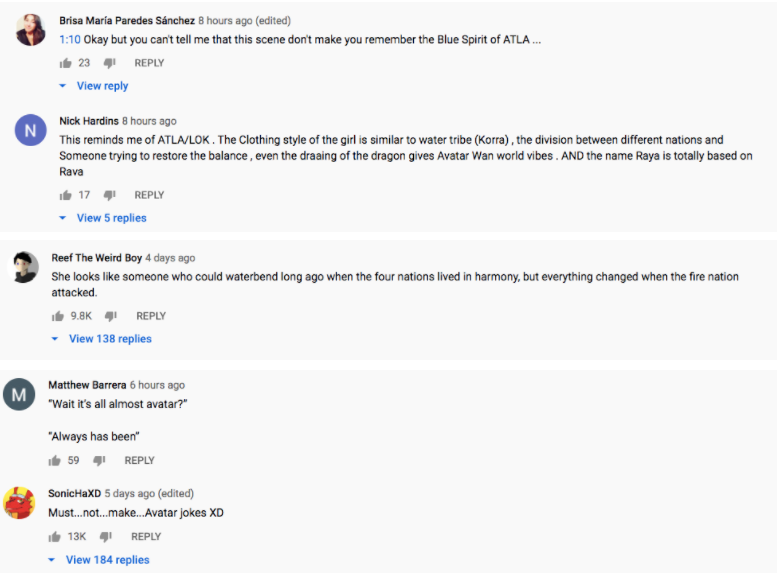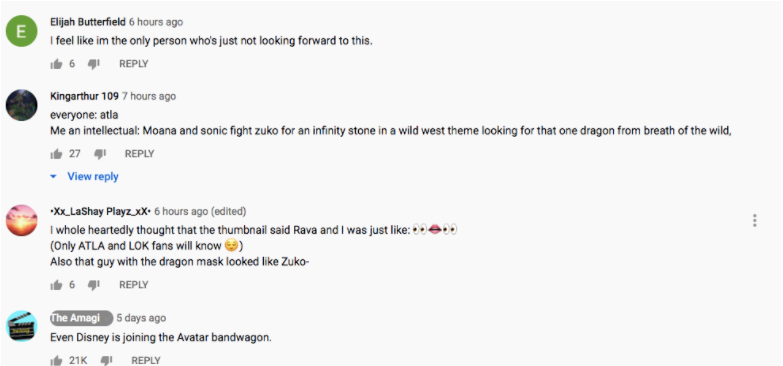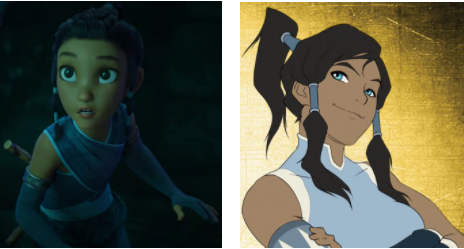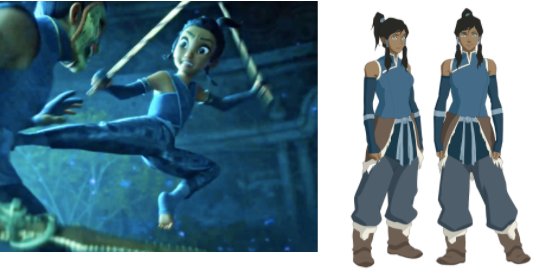The Significance of Raya: Our Culture Isn't Your Aesthetic
- The Asian Articles
- Nov 27, 2020
- 9 min read
Written by Abigail Romero and edited by Maithili Dubery and Myint Theingi
Raya and the Last Dragon is Disney’s newest princess movie set to release in March 2021 after a delay caused by the COVID-19 pandemic that hindered its initial 2020 release. Raya and the Last Dragon is inspired by Southeast Asian culture, and consists of a mostly Asian cast (including Awkwafina and Marie Kelly Tran), writing team (including Qui Nguyen and Adele Lim), and production team (including Osnat Shurer). For example, Raya is set in Kumandra, a fictional place in Southeast Asia. In addition to the primarily Asian cast and crew, the research behind the movie is sound: many of the members of the writing and animation teams reportedly visited Southeast Asia to study the culture and gain inspiration during the movie’s script writing and animation design process.
Because of the attention to detail and seemingly genuine desire by Disney to represent Southeast Asian people positively, many Southeast Asians are excited about the prospect of seeing themselves and their culture represented on the silver screen. Many have been quick to point out that Raya’s animal companion TukTuk is named after a transportation vessel in Thailand, her martial arts techniques are based on Kali from the Philippines, her name is common in Indonesia and Malaysia, and that her hat looks like a salakot* which is found all over Southeast Asia.
However, despite the positive feedback and reactions from many Southeast Asians, there has been an even larger amount of negative feedback. The comments underneath the first teaser trailer for Raya have been riddled with comparisons to Nickelodeon’s Avatar: the Last Airbender or TheLegend of Korra, as well as claims that Nickelodeon should sue Disney for ripping off Avatar the Last Airbender. A quick look through the comments proves that around 90 of the 100 comments are about how the movie is similar to ATLA/LOK, whereas the other 10 comments are about how it is related to Southeast Asian culture. Here is a look at some of the comments made under the video, as well as a rebuttal to these claims. The claims have been split into two sections based on similar beliefs (that it is a ripoff of Avatar the Last Airbender/Legend of Korra or uneducated comments).
*Salakot is the Tagalog term for it, however other Southeast Asian cultures have other names for it.
Debunking Negative Claims
This is a Korra/Avatar Rip Off
Our first category is called, “This is a Korra/Avatar Rip Off”. Let’s take a look:
As one might be able to tell, most of the comments on the trailer have the common theme of comparing Raya as a knockoff version of the stories of Nickelodeon’s Avatar: the Last Airbender (ATLA) and Legend of Korra (LOK). Many of these claims can be separated into different categories: Disney copied Nickelodeon; Raya looks too similar to LOK’s Korra; the masked man in Raya copies ATLA’s Blue Spirit costume; and the name Raya is based on LOK character Raava.
Disney Copied Nickelodeon!
The first claim we will cover is that “Disney copied Nickelodeon”. Though it might shock commenters like Leeko_Online and Reef the Weird Boy, the continent of Asia has existed far longer than ATLA was created. Disney and Nickelodeon are inspired by many of the same cultures. Nickelodeon drew most of its inspiration from Japanese, Chinese, Tibetan, and Inuit cultures, while Disney drew inspiration from Southeast Asia, namely the Philippines, Malaysia, and Thailand. Though Nickelodeon was mainly inspired by East Asian culture, they did take some Southeast Asian cultures in account of the character's fashion and design. Therefore, although it may seem like the overall vibe and look of Disney’s Raya is a copy of ATLA and LOK, Disney was inspired by entirely different sub-cultures than Nickelodeon, and a closer look into the style and design proves that.
Furthermore, many people have claimed that Disney specifically copied Nickelodeon’s ATLA storyline. For those unfamiliar with ATLA, the show is set in a fictional world, split into four nations: Water, Fire, Earth, and Air. Some people from each nation have that respective power. People from the water nation might be able to control water, people from the fire nation might be able to control fire, but only one person can control all four elements: the Avatar. The plot follows the young avatar Aang as he learns to master each element in his journey to unite the four nations from war.
Similarly, from what we have learned from the trailer, Raya’s story follows her as she tries to unite the broken world around her by finding a dragon’s egg. Not much else is known besides that, but people immediately drew a comparison due to the four tribes briefly displayed in the Raya trailer and the opening monologue which sounded very similar to the ATLA introduction. Many, as you can see from the comments above, claim that Disney ripped off Nickelodeon. This is actually a misinformed claim. The ideas of “uniting a broken world”, “being the chosen one”, and “powerful claim to identity” are all common tropes in film and story. “Uniting a broken world” can be seen in other popular children’s shows such as Steven Universe, Voltron: Legendary Defender, and The Dragon Prince. Among those stories, each of them has the element of “being the chosen one”. Other shows and movies that incorporate a chosen one character include Harry Potter, Star Wars, and She-Ra. Of course, the “powerful claim to identity” is in almost any empowering film like Moana with an entire song dedicated to her singing “I am Moana!” and Steven Universe who also has several songs dedicated to his claim to identity.
Raya hasn’t been released, so no one can definitively know what the true plot of the story will be. The point stands though. Disney is not copying Nickelodeon, not on a story basis or a design basis. Both animations are merely based on common empowering themes that are present in most children’s stories and both are based on Asian culture, albeit different ones.
Raya is a Copy of Korra!
The second point we are tackling is that Raya’s character design is copied from Korra, the main character of LOK. Comparing close up pictures of both of them, we can see that this is actually not the case. The only similarities that are evident are their color scheme and hairstyles. Their hairstyles, despite a few key differences, are very similar and likely are inspired by Asian cultures. There have been many claims that Korra’s and Raya’s outfits are very similar, but as you compare them side by side below, the only true similarity is their blue color scheme. At first glance, the confusion that their outfits are similar can be understood, but if you take a longer look at them, it proves that their outfits are quite different, down to the fur overlays on Korra to the patterns on Raya.
The Masked Man is a Copy of Zuko’s Blue Spirit!
The third point we will go over is similar to the second point: the masked man is a copy of Zuko’s warrior look. A closer look at the masked man reveals that his mask is similar to an ancient Thai warrior mask. Zuko’s mask, though, according to the creators of Avatar, was based on the Dragon King Nuo mask from a Chinese drama. As you can see, the masks are based on two different cultures and are not a copy of each other. If anything, they’re a copy from ancient Thai and Chinese traditional masks.

Raya is too Similar to Raava!
The fourth point we will cover is that the name Raya is stolen from Legend of Korra’s Raava. Raya is a common name in Malaysia and Indonesia meaning “great”, “grand”, or “big”. Though the name Raya appears in other countries, it's likely that the creators intended for the name to be interpreted for its meaning in Malaysia and Indonesia since the movie was inspired bySoutheast Asian cultures. Raava, on the other hand, was chosen by the creators of Legend of Korra from the Sanskrit perspective, meaning sound or noise, which is reasonable since she is the spirit of light. The names, though similar, have different origins and meanings.
Nonsensical Claims
The claims in this category have not been backed up by any evidence and are downright hateful. It is important to go over these claims so that we can educate others on other common misconceptions.

Let’s use these comments as some examples of negative reactions that are sorely misinformed. Hypeman 18 says:
“Offended SE people: it’s not an avatar because it's Asian!
Me: It's because of how similar the plot and designs of those two characters are that people are making the comparisons to “you cry baby’s”.
Besides the terrible grammar, let’s break down what Hypeman 18 is saying, which is: People are comparing Avatar and Raya because of their character design and plot, not because it’s an Asian version of Avatar”. What Hypeman 18 fails to realize is that Avatar and Raya are actually both based on Asian culture, albeit different ones. The second thing he fails to realize is that though the plot is similar, the character designs are very different and also based on Asian culture.
The second commenter, The Link, states that “Nobody is comparing your culture dumbcraps!”, when in reality they are. By comparing Avatar and Raya, they are incorrectly comparing two different cultures to each other. Again, Avatar was inspired primarily byEast Asian culture with a little inspiration from Southeast Asia, while Raya was (as far as we know) entirely inspired by Southeast Asian culture.

If you look at the animation in Raya, she actually has a button nose, a feature common in Southeast Asia. Moana also doesn’t have a flat nose; she has a wide nose, a nose type common among Polynesian people. (Mc here is presumed to mean “main character”)

Contrary to Ghost wizard’s claim, a quick Google search reveals that Raya and the Last Dragon’s screenplay is actually written by Quil Nguyen who is Vietnamese, and Adele Lim who is from Malaysia. Both Vietnam and Malaysia are in Southeast Asia, which is where the movie is based. Not only this, but Southeast Asian culture has been presented quite well. Disney has shown an incredible amount of detail in the clothing, skin color, facial structure, and character design in general that accurately represents the majority of Southeast Asian features.

This comment has complaints that we have already previously covered; however, one comment in Justin’s complaint sticks out the most. He says, “The only thing I’m not sure about is if the culture I mentioned is right, however, the aesthetic is very similar either way”. This is an absurd comment, especially since he is correct about being wrong. Earlier in his complaint he states, “I just find it so unoriginal of how similar it is: 4 nations, mystical dragon being a key piece to world order, she needs to bring balance, similar culture setting being East Asian”. As it has been established several times, Raya is Southeast Asian and Avatar is East Asian.
The second issue with this comment is that he calls culture an aesthetic. Aesthetic is the beauty, taste, and philosophy of art. The art styles of Avatar and Raya are extremely different, with Avatar being 2D and anime style and Raya being 3D and more realistic. However, with this comment, Justin claims that culture is an aesthetic. Let’s get one thing clear: Southeast Asian culture is NOT an aesthetic. Culture is an expression of tradition and is considered very sacred for every country. The fact that Justin feels the need to express the fact that our culture is an aesthetic that is similar to East Asia is hateful and wrong, and proof of why the representation of underrepresented cultures is integral.
Necessity of Representation
Pan-Asian representation is necessary. Not many shows, movies, or literary works accurately showcase Southeast Asian cultures. As a result, many Southeast Asian people feel as if they aren’t represented or shown well in the media. The lack of Southeast Asian (and most other Asian cultures except for East Asian) representation also breeds a mindset that all Asian cultures are similar to East Asian cultures, when in reality, Asia is a vast continent with very diverse and different sub-cultures.
Disney showcasing several different Southeast Asian cultures in one movie is a step toward the correct direction. With the extensive research done on Southeast Asian cultures as well as an Asian cast, crew, and team, Raya and the Last Dragon is looking to be a great movie that brings light to our cultures in a way that’ll educate others. After all, our culture isn’t your aesthetic.
Sources
Cover Photo sourced from Disney as a promotional poster for Raya and the Last Dragon
1. Brianpham. (2020, August 25). Cultures represented in Avatar: The Last Airbender. Retrieved from https://www.baronnews.com/2020/07/22/cultures-represented-in-avatar-the-last-airbender/
2. Dawn, L. (2020, October 21). Is Raya the Next Big Disney Princess? Retrieved from https://www.theprincessblog.org/2020/10/is-raya-next-big-disney-princess.html
3. Konietzko, Bryan; DiMartino, Michael Dante (2010). Avatar, The Last Airbender: The Art of the Animation Series. Dark Horse. P. 62-63. ISBN 978-1-62115-798-4.
4. Krajnyak, Z., & Zack Krajnyak (56 Articles Published) Zack Krajnyak is reader. (2020, October 23). Raya & The Last Dragon Is Practically A Legend of Korra Movie. Retrieved from https://screenrant.com/raya-last-dragon-legend-korra-movie-similarities/
5. Marshall, E. B., Levings, P. B., Chime, E. B., & Todd, E. B. (2017, October 26). Storytelling Tropes: The Chosen One. Retrieved from https://thanetwriters.com/essay/characters/storytelling-tropes-the-chosen-one/
6. Person. (2020, August 31). Anti-Imperialism and Cultural Representation Behind Avatar: The Last Airbender. Retrieved from https://magdalene.co/story/anti-imperialism-and-cultural-representation-behind-avatar-the-last-airbender
7. (2020, October 27). Is Disney's "Raya and the Last Dragon" a Rip-off of "Avatar" and "Korra"? Retrieved from https://www.popdust.com/raya-korra-2648442118.html
















Comments